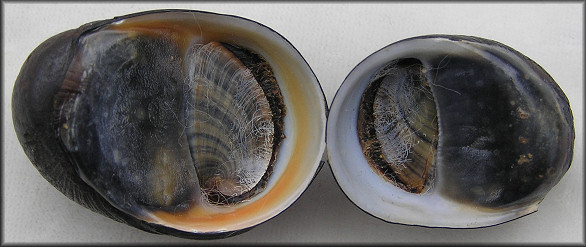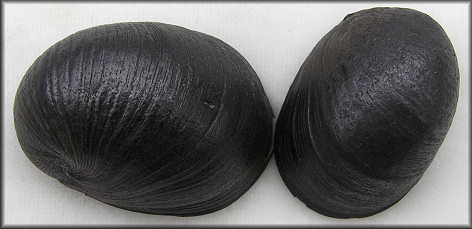|
Data Labels; The Tragedy And The Comedy |
|
By Bill Frank |
| As the
organizer of the shell clubs monthly raffle, I have access to
literally thousands of world-wide shells from a multitude of
collectors, most of whom are long-deceased. Processing these
shells and getting them ready for the monthly raffle or periodic
club auction is interesting, educational, and occasionally
humorous. At times, though, this task is quite frustrating
because the data labels are illegible or incomplete. It seems that virtually every collector had his/her own method of recording data. These range from neatly typed or printed labels to illegibly-scribbled notes on every kind of paper imaginable. Often neither the species name nor the actual locality data is legible despite the use of a magnifying glass by one whose handwriting is notoriously bad. I am sure that most, if not all, of these dedicated longtime collectors never gave any serious thought as to what might happen to their treasured collections after their ascending to the big reef in the sky. Shells last virtually forever; the persistence of people is much more finite. |
|
|
|
|
|
Neritina pulligera collected by Paul Pini |
| After the
passing of the dedicated collector, probably a family member with
no interest at all in shells suddenly finds himself with
something of some monetary and scientific value but still quite
difficult to dispose of. At this point, all or part of the collection may be donated to a museum or sold to another collector for just a fraction of its true worth. A more likely scenario in a lot of cases is that the collection will be donated to the deceased's local shell club and subsequently used in a project such as the monthly raffle or possibly be the unpopular highlight of a neighborhood yard sale. If your collection is worth spending a lifetime assembling, it is certainly worth taking the extra few minutes to prepare a proper data label that is legible to those who may ultimately benefit from/enjoy your life's passion. It's uncanny at times how much you can learn of a persons life just by the examination of their collection and labels. It is also discouraging to see the changes in the environment (usually for the worse) for a location that you shell periodically. For example, very large Murex fulvescens could be found in three inches of water feeding on Mercenaria mercenaria at Ft. George Inlet near the bridge during 1977. Today you would be lucky to find a Mercenaria. Severe erosion, combined with poorer water quality, has destroyed the local fauna in a manner noticeable over the past several years. Occasionally there is some humor or entertainment value in data labels. One such neatly handwritten label of the late Frank Lyman of Fernandina Beach illustrates this point quite well: "Neritina pulligera Lamarck, 1758 By diving at mouth of Johnstone River near Innisfail, Far North Queensland, Aug. 18th, 1973. Paul Pini collector, via Gwen Pini. Mrs. Pini insists that teenage Paul, must take his sister along to sit in the boat and watch for a 12' Crocodile that lurks about river mouth. No Croc. = Paul dives!" I don't know about you, but if I had the choice of a rare specimen with general locality data and this common Neritina, I would take the latter. You can almost picture young Paul and his sister as they collect the specimen from data label information, 20 years after the fact. A dealer might turn his nose up at such a specimen lot, but you have to admit that it certainly is much more interesting than a vast majority of labels that you usually see. |

